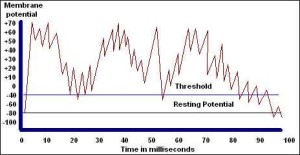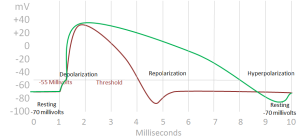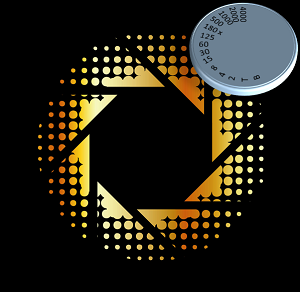17 Apr Learning by Repetition
 Frequency and Exposure
Frequency and Exposure
For the very young, language learning requires mental gymnastics. Most theories of language learning refer to the fact that the frequency of repetition of a word or structure pattern determines the strength of its acquisition. In this context, there may be some threshold of frequency which, once reached, will result in the acquisition of some aspect of language such as a lexical item or a morphological or syntax structure. John Sowa, for one, believes language is affected in the same way as other functions by the maturation of the human brain. He draws this parallel: “Intellectual activities like music and chess as well as highly skilled physical activities like skiing and gymnastics must be learned at an early age for complete mastery” (1984, p.211).
| Understanding Context Cross-Reference |
|---|
| Click on these Links to other posts and glossary/bibliography references |
|
|
|
| Prior Post | Next Post |
| From Concept to Communication | Irrational Language Rules |
| Definitions | References |
| natural language learning | Chomsky 1968 |
| word syntax | Menyuk 1988 |
| pattern acquisition | Tou 1974 |
Skills which require intuitive, split-second reactions involving a combination of mental, physical and sensory activities are best learned by repeated exposure. Youth seems to be the best time for this. The young mind is less biased, less cluttered, more open, and unconstrained by doubt. Otherwise, learning is not reserved for the young. Well-trained adults can develop near native fluency in a second language, though learning difficulty may increase with age.
 The illustrations at right represent impulses in the brain. The top graph shows repeated cases of excitation in which each impulse exceeds the threshold. The bottom graph shows one prolonged action potential whose peak far exceeds threshold potential. Frequency in the brain could equate to multiple action potentials repeated at a single synapse.
The illustrations at right represent impulses in the brain. The top graph shows repeated cases of excitation in which each impulse exceeds the threshold. The bottom graph shows one prolonged action potential whose peak far exceeds threshold potential. Frequency in the brain could equate to multiple action potentials repeated at a single synapse.
Frequent impulses occur over time, like the length of time a shutter is open
Exposure in the brain could equate to one or more extra-ordinary impulses with high peaks and/or prolonged potentials.
 Intense impulses are like a larger aperture, permitting more light to enter
Intense impulses are like a larger aperture, permitting more light to enter
Please take a look at some of the discussion in Section 3 for more information on variations in brain signals.
Motivation
Many believe there is more to learning than frequent repetition. Motivation has been proposed as a powerful discriminant as well. The initial motivation for children to learn language is to satisfy their physical needs. As children, youth and adults ascend through the hierarchy of needs, their motivation to master language continues at lesser or greater degrees, depending on what they need at the moment. For example, the motivation for a child to learn about hot stoves is physical: repeated exposure is often unnecessary because of the intensity of the first impression. As people mature, the frequency of repetition required for learning may decrease. Even for young children, powerful, one-time exposure may be enough to leave a permanent impression.
 Consider the metaphor of the snapshot symbolized at right. In a computer-based language learning model, both the temporal and spatial elements could be approximated. Frequency, like shutter speed in a camera, could be used to determine probabilities. Exposure, controlled by a camera’s aperture, could be used to determine confidence values or the number of active links in a representation.
Consider the metaphor of the snapshot symbolized at right. In a computer-based language learning model, both the temporal and spatial elements could be approximated. Frequency, like shutter speed in a camera, could be used to determine probabilities. Exposure, controlled by a camera’s aperture, could be used to determine confidence values or the number of active links in a representation.
In photography, film is exposed by light controlled by two variables: shutter speed and aperture. The temporal element, shutter speed, or continual bombardment of light over time equates to frequency. The spatial element, aperture, or the degree to which the film is vulnerable or exposed at a given instant equates to the aperture. As brain input seeks the path of least resistance, the second time we see an image, smell an aroma or hear a sound or phrase, it will travel the same neural pathway. Before long, the new neural pathway has been habituated, or stimulated enough to “attract” activation from similar stimuli. Thereby learning occurs and habits are born.
As we model learning by repetition in computers, specific algorithms or heuristics will be defined to replicate the frequency and exposure constraints of learning.
| Click below to look in each Understanding Context section |
|---|








